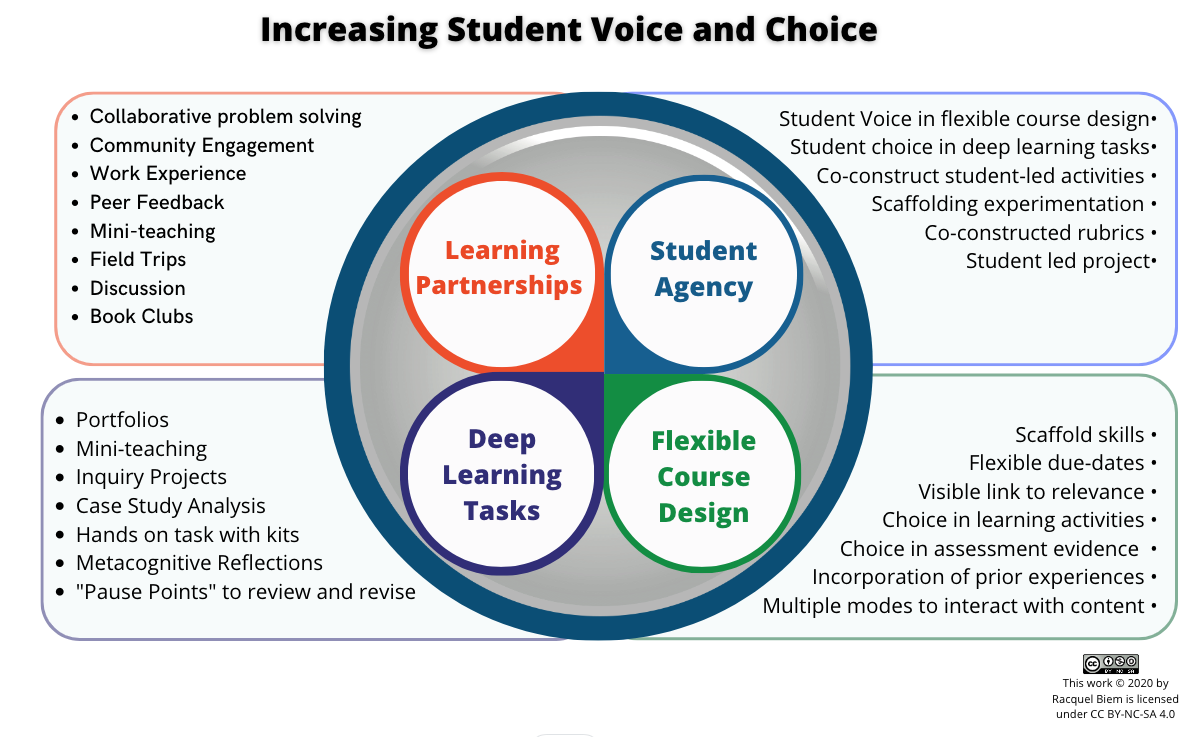Increasing Voice and Choice in the Classroom
Boost engagement in your classroom! Discover strategies to amplify student voice and choice, making learning more personalized and empowering for all.
By Gwenna Moss Centre for Teaching and LearningWhen we think of increasing voice and choice in the classroom we may immediately think of choice in assignments or assessment tasks. Whereas these do increase student choice, these alone do not get to the heart of increasing student voice and seeing students as partners in the teaching and learning process. It is for this reason that supporting student voice and choice requires building a learning environment focused on partnerships, student agency, flexible learning paths, and deep learning tasks.
The Learning Framework:
Learning Partnerships occur when students actively learn with and from others. Collaborative learning partnerships are intentionally designed, meaningful, and reciprocal.
Student Agency refers to students having an active voice in their learning and are supported to make learning decisions that lead to meaningful connections.
Flexible Course Design ensures the course is created for a flexible learning path that can be led by the student to co-create or choose relevant learning options.
Deep Learning Tasks are intertwined with critical thinking skills with an emphasis on real world applications, “hands-on” experiences, and extending learning beyond the classroom.

Education is constantly evolving – technology advancements, societal changes, and most recently the COVID-19 pandemic. If there is a huge shift in the ecosystem that affects the teacher, it will have a greater impact on students’ learning than if those same shifts happen in a connected ecosystem. With increased voice and choice there is an increased ability to have a flexible learning environment that can respond to the continual changes.
|
Consider the pressure a teacher-centred model of education puts on the instructor in terms of needing to be the only person to receive information, to ask questions to, and to provide support and guidance. |
|
| Rather, consider a learning ecosystem model where the student has voice and choice within the ecosystem, where there are strong learning connections within the system that are not solely reliant on the teacher. |
If you would like to learn more about incorporating choice and voice in your classes, please reach out to the Gwenna Moss Centre for Teaching and Learning.
Image credit: Photo by Ann H on Pexels

